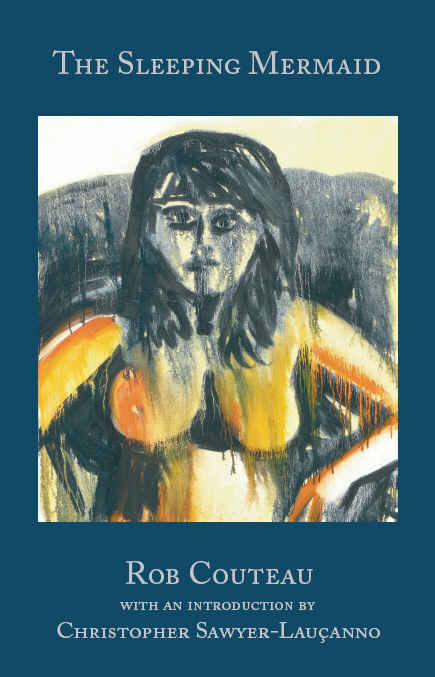|
|
|
|
|
|||||||||||||||||
|
Rob Couteau: When I read various interviews and articles about you, I sense the strong influence of literature and art in the background of what you’ve done. And I know from our recent conversations that your major literary influences were William Blake as well as the Lake poets, Wordsworth and Coleridge, who led the Romantic Movement in England. These men were reacting against the supremacy of reason to the detriment of feeling and intuition. How did all this shape you, and what drew you to their work? Robert De Sena: At an early age, I had a level of sensitivity that was very different from a lot of my friends. Being in a really tough, violent neighborhood, sometimes I overcompensated by being much more aggressive and more violent to hide that. But my escape was always through literature. And when you have that predisposition to emotions … I think you have it too, Rob. Without us being aware of it, we married our inner woman at a relatively early age. And with that came a balance that a lot of other people didn’t have. I remember, and I never forgot this, a friend of mine was plagued by this girl we all warned him about. He couldn’t express his grief and his sense of betrayal. And as so many other guys do, he got drunk, then he punched out the side-view mirror of a car and lost the feeling in his hand. If he could have articulated his grief, he wouldn’t have done that. And that always struck me: that I was not going to be one of these repressed, corked guys that will store up rage and anger and then just explode.
So, when I was in high school, I took Latin, and that brought me in touch with mythology and the classics. I was predisposed so the Romantic Movement. To – well, Blake later – but, you know, Coleridge, Wordsworth, Keats, Shelly. Byron was one of my heroes, an absolute madman, and I was very comfortable there. I celebrated their disdain for structure, to some extent, and also their fascination with the creative force. Keats especially had a big influence on me. You know, he boxed, he was a nurse, he got TB, he had this frustrating relationship with this lover that didn’t turn out the way he’d hoped, and he ended up dying in Italy. I think I was just drawn to that, and it stayed with me. That led me into the world of myth. Which opened a template for inner harmony, and harmony with everything outside of yourself. And that became my preoccupying thought when I was teaching in John Dewey High School. And then, of course, I found Jung, who gave me a sense of spirituality that took me right out of any parochialism that lingered from my past, and all of a sudden I was on fire. And Joseph Campbell also had an incredible influence on me. When I look back, I see four streams in my life that I believe were not orchestrated by me. With these four streams came the possibility of a Council for Unity. One was my background with wise guys, which I still have with some people from my past. My passion for myth. Group dynamics. And organizational development. Those four streams, if one of them were missing, there wouldn’t be a Council for Unity. RC: It’s fascinating that “wise guys” is one of the streams. Tell me about that. RD: I would see a close friend from high school who was connected, and he would always say to me, “Listen, anybody ever has any problems with you; you call me, you understand?” When I was younger, my crew got into a real, serious beef with another crew, which was one of the most violent gangs in Brooklyn. And it was going to be Armageddon. So we had this big meeting. We can’t not go to this social event, it was a dance, because they would have hunted us down. So we had to go, and basically we were going to catch it. We were discussing what we were going to do; it was like a war council. “You know,” I said, “I got this connection, a ‘bad guy,’ who always told me that if I ever needed help, I should call.” So they were like: “Jerk off, what are you waiting for? Fucking call him! Otherwise, we’re going to get killed!” I got to thinking: you know, I don’t want to get him killed. But I called him and told him the problem. He pulled up in a big dark Cadillac with five other guys and, um, let’s just say they made that problem go away. Then I started hanging out with him and his crew and, at one point, I really thought about the possibility of getting into that lifestyle. One of the great expressions that comes out of their mouths is: “Hey. We’re crime. And crime don’t pay.” Basically, the translation is: They don’t pay for anything. They don’t pay for drinks, they don’t pay for … I mean, that’s the way it was. Plus, all the women you could imagine, and power. They took crime and raised it to an art form. They kill somebody: no gun, no motive, no body. Huge political influence back in the day. And I mean, for a kid like me, that was a green light. But the more I got involved, the more I saw it was more about money than honor. And I went through a betrayal that I never really recovered from. Then a guy that I idolized, who was about ten years older, who knew he was going to go, for some reason – Rob, why he picked me out of a crew of fifty guys, I will never know – but he basically made me a project: to get me out before he died. He would introduce me to ex-offenders who were in their mid-thirties, and they all looked like they were seventy. Done. Done time, every other tooth missing, unemployable, dealing drugs. That was my mirror. So, that was pretty horrifying. RC: He gave you a vision of what the future held as a gang member. RD: Absolutely. Like in A Christmas Carol, but with a different application. So when he passed, I made a promise to him that I would take his lead. RC: The influence of the wise guys was to show you what not to do.
RD: Absolutely. When we created the Council, we looked at what drew us to criminal lifestyles and to … well, with me, the Mob; and with them, street gangs. And you know, there’s a fifty-percent divorce rate in this country. When I saw group dynamics, I realized: the overwhelming majority of kids in this country have holes in them the size of craters. Nothing is addressing them. They’re surrounded by impersonality, rampant materialism – you know, you are what you wear – money’s more important than people, sex is more important than love. They either explode and fuck people up, or they implode and get self-destructive. So the need for family, and for being connected to something, was a driving force. That’s what wise guys do; that’s what gangs do. And if I didn’t have that awareness, and if I didn’t go through the same sort of betrayals that they did, there wouldn’t have been any connection there. So, this idea that we joined something that forced us to commit a criminal act to get the benefit of a family, and robbed us of our free will, was something that had to be experienced viscerally. The fact that I could articulate what this was like, and then have them share the same disappointment, was profound. The other thing we wanted was to be safe. We wanted security, which is the main reason why I got hooked up. But the reality is, you’re not guaranteed safety; you’re guaranteed retaliation. The engine of violence is fueled by strike and counterstrike, so it never ends. We ultimately realized that, in this lifestyle, not only were we not safe; we were paranoid. You don’t know if you’re going home today. Plus, there’s this idea of: if you’re really going to be hardcore, you can’t live for tomorrow. Otherwise, you won’t be a gangster. If you’re going to carry a gun, you can’t fear death. In fact, in a lot of ways, you have to be in love with death. Because, number one, death frees you. And number two, if you don’t fear death, you’re a very dangerous person. I’ve heard guys say, “I don’t give a fuck if I live or die, I’ll come back here, I will kill you, your fucking family …” I mean, that’s the mentality. So we realized that the other item in the brochure, “Hey, come and join us; you’ll be safe,” was a crock of shit. RC: So you realized a choice needed to be made between belonging to something negative, or belonging to something positive. One of the things I was going to discuss with you is that the unity of what the Romantics call “cosmic consciousness,” and the individual’s link with something grander and more transcendent, are all quintessential Romantic themes …
RD: Yes! RC: And I found it interesting that “unity” even appears in the title of your project, which is about bringing an end to those things that separate us. RD: Yes, I got that from Keats! They actually had this thing called necessitarianism, negative capability, but one of the things they actually believed in was an evolutionary consciousness that was afoot in the world. And that the French Revolution and the American Revolution were applications of that. And Blake saw in his own mythology … and I wrote a paper on his Four Zoas, which, my God, if that didn’t anticipate Jung, I don’t know what did … RC: You could see how Jung took his entire theory of the four psychological types right out of the Four Zoas. RD: Right out of the Four Zoas, yes! [Naming all four Zoas:] Urizen, Urthona, Luvah, Tharmas. RC: Before Jung, there were many other people besides Blake that had a fourfold … RD: The quaternity!* I mean, it’s right there. RC: … yes, that had a fourfold psychological system, or quaternity. But what Blake also anticipated, besides this fourfoldedness, was that when one psychological function, like for example, thinking, which Blake calls Urizen, or “your reason,” usurps the psychic energy from the other functions, there is a revolt against it … RD: There is a crumbling. RC: Yes, a crumbling, or a reversal to the opposite. And I’m convinced that Jung stole this directly from Blake, you know? [laughs] RD: Oh, without a doubt! And that whole thing, Blake’s view of the world as an inversion: where all things anointed by the monarchy, and what the church would call “heaven,” were actually evil. He was the first poet to celebrate sexuality as a godly force.* His idea of the fall was that, the moment when God saw his material creation as something separate from himself, he fell into those four entities, and he basically sees what goes on – it’s like in the Iliad – what goes on in the cosmos is being mimicked here. At the end of the Four Zoas, when the four energies are uniting with their female selves and then uniting together, he sees the French and American revolutions moving in exactly the same direction. I read Fearful Symmetry, by Northrop Frye. God, it was one of the most profound things I ever read about an interpretation of Blake’s vision.
RC: Ah, the great literary critic. RD: Yes, a really great literary critic. I found him as challenging as Blake. He takes you through the provenience of Blake’s thought and through his mythology. As you read this, you’re like: “My God! If Carl Jung read this, and I don’t know if he did, this totally anticipates his work. RC: In Jung’s Psychological Types, there’s one footnote in the book to Blake, but I think it’s a red herring footnote, because he simply mentions something about how Blake’s work anticipates the notion of introversion and extroversion.* But he doesn’t go anywhere near the Four Zoas. And I know from reading biographies that, whenever the subject of Blake came up, Jung would get into an emotional tizzy, denigrating Blake. RD: You’re kidding! RC: I’ve seen this in biographies of other artists as well. When their true influence gets mentioned, they often get upset. They want to steer you away from it, because they don’t want you to realize how influenced they were. RD: “Me thinks the lady protests too much”! RC: Exactly. Picasso had a similar reaction regarding the poet Baudelaire. Baudelaire had an essay on the modern artist, “The Painter of Modern Life,” and it was very influential on Picasso, but Picasso would try to steer people away from it.* So, Jung was certainly aware of Blake, but he had a very peculiar reaction whenever the subject came up. RD: When I was in graduate school, nobody wanted to go near Blake with a ten-foot pole. RC: In France, Blake remains virtually unknown, because the French deify reason. RD: The French worship Edgar Allen Poe, and you would think that Blake would be, you know, ten dimensions beyond that. I don’t get it. RC: The whole French Enlightenment was a deification of reason, and I think Blake’s appreciation of intuition and pure vision, of gnostic vision, goes against this. RD: Yes, absolutely. There was another book, another piece of literary criticism by this guy named Erdman called Prophet of Empire. And Blake really was an amazing gadfly, a real character. One of my professors told me that Blake used to go into his garden with his wife, naked, and read from Milton’s Paradise Lost, where Adam and Eve are having sex. I mean, what a character. Plus, his art …
RC: Oh, his art is incredible! RD: Yes. I mean, I should go back and revisit all this. My friends used to call me “Orc,” because Orc was the revolutionary, rebellious force in that mythology. But to see the personality in all its conflicting dynamics and then go from that into the Tao, the I Ching, the Vedas, and all of a sudden you’re looking at a kind of cosmic awareness of the direction the human personality has to move to, and how it must be harmonized. And when it isn’t … I mean, when I wrote Chrysallia, it was basically a response to two thousand years of the supremacy of the obsessive male need for control, for the obsession with intolerance, and a Darth Vader kind of order to the universe: a motivation of greed, decisions never made from compassion, the demonization of women. I’m looking at the consequences of those two thousand years, and I had to make Chrysallia into an icon who was the antidote to Darth Vader. Here he is with a light saber, and I gave her a Buddhist flower. One of the great things Campbell said was that, when Buddha was trying to illustrate a point, he held up a flower, and his followers got it. And the flower is also a major force in Gilgamesh, because it contains the secret to eternity. It dies and it’s born again. All these mythological motifs just came, channeled through me, and I wrote it. And Council for Unity has one of the greatest mythologies of any entity that I know. RC: I’ve often thought that Jung’s work with archetypes could be considered an expression of the Romantic Movement in psychology … RD: Yes. RC: But what you do goes beyond mere psychotherapy, because you’ve created an alternative social structure that offers direct initiatory experience.
RD: Yes. Even in prisons. RC: It verges more on the teaching of Joseph Campbell, who believed that the new message would be found neither in traditional psychology nor in organized religion but in creative, artistic expression. The Council is a cultural creation that offers practical coaching and support rather than mere psychiatric indoctrination. RD: Absolutely. But the Council also, in very subtle ways, takes our participants on a therapeutic journey. The precursor to Chrysallia is a six-page dragon-slayer myth that every kid in Council identifies with. I made the hero just like them: abandoned, negatively conceived … RC: And you do that through the ritual you’ve created, rather than sitting them in front of a psychiatrist once a week. RD: Myth and ritual: that’s a tandem you really can’t separate. However, if a ritual doesn’t emanate from a myth, the myth will have limited power. So, this kid goes through seven steps to become a dragon slayer; and, in the process, he rises from the lowest rung of the ladder in his society to becoming a prince. Those seven things that he does are crystallized in the myth on only six pages. Whether it’s gang kids or kids in the third grade, they all have dragons. They all know that if they don’t face their dragon, someone else is going to be driving their bus. And they know they can’t kill the dragon by themselves, or that they can’t even see it, and others can. So, in this collective sense of conjoining to face your personal dragon through the help of others, and through the skill sets and the mythology of Council for Unity, you do that. We’ve had kids create dragons, effigies … And Sheepshead Bay was one of the biggest gang schools we had. They took their dragon to Coney Island and burned it. In facing the dragon, they created visual panels where they were totally overwhelmed and minimized in the first panel. And, as they go through the Council process, in the final panel, they’ve killed it. And now they’re bigger than the dragon. That’s the therapeutic journey. You don’t want to see the thing that controls your life, and then you seek help, and then the therapist turns the light on in the cellar of your psyche. You scream like hell, because you’re confronting the thing that is ruining your life. If the therapy works, you come back up, and that force no longer controls you. Council’s mythology follows that therapeutic journey to a T.
When we have our ritual on May 29, 2015, which reflects the entire network, the Council procession will be led by two individuals: one who’s carrying a sword, and the other who’s carrying a mask. Those are the two dragon slayer weapons. The mask, because it was so powerful that, when you stare through it, it bore laser-like beams. The hero used the mask to burn out the eyes of the dragon, which petrified everybody else. Our kids see the original dragon slayers of Council for Unity leading this procession, and their hair stands up. At the end of the myth, there’s a dragon slayer who becomes king, who wants to leave a legacy, and he takes all the boys and girls past the boundaries that keep them in, and that kept him in, and he brings them to the cave where he found his sword and mask. And the story ends with: He knew there would be other weapons, with their ability to slay dragons that the children would surely have to face, and all they had to do was pass through the dark entrance, which is what he did. Picture this: There are fifteen hundred kids from every conceivable culture. It’s seeing what the world needs to become tomorrow, today. The two youngest kids in the program, the youngest boy and the youngest girl, come forward in the middle of the dance floor in front of these kids. They all read the story; the myth is alive. They get anointed by the dragon slayers with the sword and the mask, then they hand the sword and mask over to the two kids, who do a four-corner salute. Half the place is in tears. The myth is alive. We’ve got a myth that works. And it’s profound. It affects murderers in prison to kids in the fourth grade. Everybody’s got a dragon, and everybody’s got to face it. We also do group dynamics. We have them deal with the dragon within themselves, then they have to look at the dragon in the group. The dragon does not want them to form the Council for Unity family. If the family gets created, and if they learn the behaviors to make that work, the dragon’s going to lose his power. So they realize, in the next phase of this, that the dragon is really the ego. And they have to annihilate the ego to get the family they want. Then they go to social consciousness, the dragon in the school, and now they’re looking at external dragons that render systems ineffective. And then, the dragon in the community. They are going through – here comes the quaternity again – a four-point process where they transform personally. Then they become activists and advocates for change. It’s amazing.
RC: They don’t actually annihilate the ego, but they transform the ego, right? They annihilate the old ruling value of the ego. RD: I mean, the minute you stop being a biological egocentric being is the beginning of your maturity: your escape from the prison of the self. RC: So, it’s egocentrism that’s annihilated. RD: Right. I mean, I could split hairs with them, but they wouldn’t get it. But this idea of putting themselves first, to be defensive, to be resisting, to not accepting constructive criticism or to have to apologize for bad behavior … You’re not going to get the family you want if you hold onto that egocentricity. So they know: we have to park our egos, or we’re not going to get the family. When you mention all this stuff, you’re really forcing me to revisit it. My kids are not going through the journey that we went through, but they seem to have arrived at the same psychological place, without all the constructs and all the exposure. As Namaste has it, “The god in me sees the god in you.” My kids come from every conceivable background. And when they’re together, from Buffalo to Riverhead, their perception of one another reminds me of a comment that Campbell once made to Bill Moyers when Moyers was interviewing him. Moyers says, “Well, how do you experience this thing you call God? I mean, I’m a Southern Baptist, but myth has made me much more tolerant. I see the same questions; I see the same answers. How about you?” And Campbell looks at him and says, “You’re looking at it. So am I.” I cried for ten minutes. I mean, that’s it. If that’s what you see when you open your eyes, that the same light in you is shining back at you, you inherit a different world. And my kids react to one another like that because they’ve gone through the Council mythology. And you know what they realize? That in unity they’re safe. And in unity, nobody’s making fun of them anymore. So, instead of a preachy cosmic view of why we should all be connected, to them it’s a very practical principle. If we’re all together, there’s nobody left to fight, and there’s nobody left to make fun of. That’s the level that they’re on. RC: They’re experiencing it directly, through their feeling. It’s not a cerebral, detached sort of thing. RD: Yes, right. Fascinating. RC: Let’s talk about your background. When you and I first met, you were teaching in John Dewey, which was probably the most innovative high school in America at that time; would you agree?
RD: It was, without a doubt. The greatest experiment on the secondary level in the twentieth century. RC: I was a student in your mythology class in my junior or senior year, which would mean 1973 or 1974, and you were using Jung’s Man and His Symbols as one of the textbooks. And again, even today, I think that would be very rare to find in a high school. I don’t think anyone else in any high school in America was teaching Man and His Symbols. RD: I was nuts! RC: It was a wonderful thing for me to see. I’d already read the book, but until then I’d felt so isolated in my interest in Jung. Now, of course, things have changed; there are many more people interested in him. But just the fact that you assigned that text was meaningful to me. RD: The other thing which was great was his case studies on dreams, and the fact that myths and dreams are twins coming from the same collective unconscious parent. When I was teaching myth, we were looking at all the manifestations of the unconscious through dreams. Dreams that anticipate the future, dreams that deal with issues of falling, and flying, and, you know … RC Universal themes. RD: Yes. Ultimately, I was trying to get my students to realize: If these messages have this profound information that’s available to us, and all we have to do is learn another language – because these things aren’t literal, they’re symbolic – and we can understand that, then the windows of perception are accessible. And ultimately, I was able to get them to look at the conventional view of God and see the collective unconscious as the psychological construct for what God supposedly does. And that this thing is in them. And it’s telegraphing every day. RC: As Blake says, When the doors of perception are cleansed, man will see the world as it is, infinite.
RD: Yes. RC: Again, a theme of unity. RD: Yes, a theme of unity. RC: Another remarkable thing about John Dewey was that, although it was a racially “mixed” institution, there was very little racial tension within the school itself in the early Seventies. RD: Well, it started in ’75. One of my original members saved an article from the high school newspaper, the Vanguard, about intruders coming into the building and assaulting students. They were outsiders, but students in Dewey were letting them in. There was a festering Italian-black conflict that existed in the community. You had the Marlboro Housing Project on one side and a big organized crime presence on the other side of Stillwell Avenue, from 86th Street … It was right out of Saturday Night Fever. RC: In 1982, Willie Turks, an African-American transit worker, was beaten to death by a mob of Italian-Americans led by a self-described “unemployed weightlifter” named Gino Bova. Although the judge in Bova’s trial said there was a lynch mob that night on Avenue X and that “the only thing missing was a rope and a tree,” she sentenced him to only five to fifteen years, of which he served less than eight. In 1989, a sixteen-year old named Yusef Hawkins … RD: Yes, Joey Fama killed Yusef Hawkins. RC: … was shot twice in the chest and murdered for the same reason: for being black in Bensonhurst. This was the sort of atmosphere you were working with when you decided to become a peace mediator at John Dewey, located at 50 Avenue X. Describe how you managed to turn all that around. This is what I’m really fascinated by. How did you figure all this out? You had experience being in a gang, but you had no experience as a peace mediator between gangs.
RD: Well, actually, I did, Rob. When I was teaching in East New York Vocational High School in the Sixties, the riots in the aftermath of Dr. King’s assassination, the Kennedy assassination, the Civil Rights Movement, led to some really horrific conflicts between and among groups. Now, on the one hand, you had this whole flower-power motif where you could go to Central Park on any given Sunday and hang out with kids from every race, color, and creed. And drink wine, smoke pot, and listen to music. And on the other end of it, you had the Black Panthers, the Young Lords; you had a lot of radical groups on campus. When I was in East New York High School, the population was Jewish, Italian, Black, and Latino. They were protesting every other day. They went out and rioted; they burned cars. I knew every kid in the building; I loved them; and I knew all the bad boys. And all the bad boys, normally, gravitated to me. One day, the school was surrounded. The principal was going crazy. He was newly appointed; he was on probation, and he realized that if those kids didn’t come back in the building, and if this hit the press, he was dead. So he sent everybody he could out: the dean, the guidance counselors, but they ran them back into the school. Finally, the dean said, “Listen, there’s only one guy here who can get those kids back in,” and it was me. I had no intention of doing that, because I was with them. They were revolting because it was a vocational school, and the curriculum was antiquated. The student government was made up of handpicked white kids. They felt they were being negatively stereotyped. They were radicalized in a lot of ways, and they wanted to see change. So he asked me if I could go out and get them back in. And I said, “Why should I?” I said, “I’ll tell you what. I’ll go out there and get them back in, but when they come back in you’re going to get a different school, because I know exactly what their demands are.” And I went through everything: “I want a new curriculum; I want creativity …” I mean, we took that antiquated model, and we turned it upside down. One of the greatest moments of my life, Rob: I walk outside, the school is surrounded; you got these three guys on bullhorns, a white guy, a black guy, and a Puerto Rican, whom everyone called Napoleon. And I walked out, and eighteen hundred fists went straight up in the air with a roar. Because they knew that, if I went out, I would never fuck them. So we met for an hour, then we walked back in. Then I got a Wall Street firm to donate a brand-new English curriculum. My kids were sitting around in circles, deciphering the dreams in Siddhartha and how they reflected some of Jung’s archetypes. And of course, we ended up on the front page of the magazine section of the Sunday News, which ultimately got me to Dewey.
So I created the prototype for the Council for Unity in this thing called Students United. And it was glorious. Four years of … It was being back in the nineteenth century. And they wrote. We had this literary arts magazine called Renaissance. If you ever want to learn about the Sixties, you could read those four volumes. It’s all personal … RC: I was going to say, this could only have happened in the glorious 1960s. RD: Only. Without a doubt. When I came to Dewey in 1970, Students United came there on my second day, ready to kill anybody on campus who broke my balls. [laughs] I said, “Get out of here! I’m going to lose my job!” you know? Then I created Council for Unity as an outgrowth of all this. And the article in Vanguard, it dates us – it’s the only thing we have in writing – as beginning in 1975. It dates the formation of the Council to deal with all this racial discord. I could send you an email from this guy, Gil Ramos, who was representing the Puerto Ricans. All the Italians from across the street and from nearby Lafayette High School came down to Dewey to take out the Puerto Ricans. They almost kicked a kid’s eye out. And, as Gil tells the story, they’re going for chains, and bats, and they’re going to confront the Italians at the gate, in the rear parking lot. I got wind of this, and I rounded up all the Italians that were with me, and with Council for Unity, and everybody else I could get my hands on. And, as Gil tells the story, “We’re ready to go, and I hear a voice behind me saying, ‘If you fuck with them, you fuck with us.’ I turned round, and I saw Mr. DeSena with about fifty Italian kids, and that changed my life forever. Because when I realized they were willing to go to bat to protect us, I had to join Council for Unity.” And you know where we had the sit-down? A hundred Latino, Italian, and black kids in the back of a restaurant in Bensonhurst that was run by “associated guys.” They sponsored a free lunch, and we made the peace. And they also sponsored our first induction in there. RC: So you’re telling me that connected guys sponsored the first Council for Unity induction? RD: Absolutely. And it gets even more interesting. They gave us the back room and the band shell. And the bar was perpendicular to where we were, so they couldn’t see all the kids seated, but they could see them, one by one, as they came up to the stage and shared their journey in Council, and what it meant, and how it transformed them, and how they viewed the world differently. And so, as we’re having the induction, all these wise guys are listening to this! RC: Bobby, how do you go into a jail such as Riverhead, with guys that are totally hardcore, and not only get the trust of somebody like that but also help him to get in touch with his more sensitive side, which is what you’ve told me you do. How do you accomplish that? RD: Well, first off, there’s a reality here that is unavailable to the public. They are in hell. They’ve had their humanity ripped out of them. They’re in prison, and they’ve been abandoned by this “thing” of theirs that they gave their loyalty to. But now, nobody’s writing to them. Nobody’s putting any money in their commissary. Nobody’s helping their family. This is very disconcerting. The other thing is that, as men, they are required to wear a mask: to muffle, suppress, and mask the agony, the disappointment, the tragedy of their journey. When I come in and roll out Council, and talk about how we created an antidote to gang culture, when I talk to them about the life, and talk about the thing that we joined and the promise of a family, and then go through the fact that, when somebody forces you to commit a criminal act, that’s neither a family nor love – when somebody robs you of your free will, that’s not what families do – what are they going to do, argue with me? It’s the fucking truth. Council’s based on family, unity, self-esteem, and empowerment. Again, we’re back to Jung and the quaternity, but in a different way. I just take the four negatives of that: You were promised safety, you ended up being paranoid. They’re not going to argue with that either. Council’s concept to deal with safety is unity. You’re in this prison, you’re in hell, and all your enemies are here. And to compound the fact that you’ve lost your freedom, this environment that you’ve created, this environment of conflict, just compounds the hell you’re in. But if you all join Council, you’ve got a new ecology in this prison. It won’t be one of conflict. Now, you can take advantage of programs, you can take advantage of education, because your other needs are being met. So, as we roll out the Council’s ethos and bump it up against the negative world that they’re in, the transformation occurs. Now, this is the best part: they’re dying to take that mask off. If I take you to prison, you will hear new members being engaged by the Council. Of course, they want to know what’s this thing is like. And, to a man, without any prompting from me, the members explain: “This is a place where you can come to take your mask off and be yourself. We’re all going through the same shit. As you’re going to find out, the Council’s a family. And it will help you to grow, to develop, and to change. And you’re going to learn a new way of behaving.”
So we’ve introduced a female value system – and if I ever said this, I’d get popped – into a very hard, cruel world of men. The value system is to be vulnerable, to be sensitive, to be transparent, to be open, to be authentic. I use Campbell: the most heroic thing the hero ever does in the modern world is to be himself. We get into a whole big thing about what that means, and we assign a heroic quality to that. To give compassion. To seek it. And you know what? They’re starving for it. It’s no great fucking trick. This is what they’re starving for. And when you invite them to embrace it … I have seen the leaders of these gangs … The founders of the Council for Unity in 2007 were a thousand times more violent than the founders in ’75, and then later, in ’79, and in every gang school we’ve ever had from Columbus High School to Sheepshead Bay. They all have come over. You’ll see in that newspaper article that I sent you, one of the guys, who was one of the toughest guys in the prison, is crying. It’s the first time he cried in years. RC: So you don’t use words like “female value system,” but you speak directly to their feeling, using different words, and, in the end, get them there anyway. RD: Yes. It’s the Romantic Era in a lot of ways: acknowledging your emotionality. And we talk about it. I use the metaphor of a pressure cooker. It’s like thermodynamics. If you put water in a pressure cooker and put the heat up, and close that valve, that motherfucker’s going to pop. If you’re repressed, and you can’t share your grief or your tragedies, you’re going to explode or implode. And so, we’re the valve in the pressure cooker, and we’re inviting them to be themselves. And they are starving for that to occur. Now, if you were to exhibit those behaviors on the outside, you would be called a fucking “pussy.” Because a “pussy” is sensitive, and vulnerable, and transparent. And, as a result, you’re not going to act that way or be that way. If you look at the guys who come into Council, whether it’s a gang school or in prison, and see them day one and then see them two months later, you’d think you were looking at another species. They transform. It’s a hard thing to get a grip on unless you see it. RC: Again, you’re able to do something that a psychologist can’t do, because you offer a holistic myth and ritual.
RD: And a tribe. You know, another thing, again, you talk about literature and its impact: I’m in graduate school, in American lit. I had to read de Tocqueville’s Democracy in America. And one of the things that became clear in defining us as a culture was this obsession with rugged individualism. It defined the American. He wants to be free to move and to pursue his entrepreneurial goals without any restriction. The American has a basic hatred of government and a basic mistrust of government. And the American sense of freedom is more personal than collective. One of the conclusions he came to, he said that, if they are taken to extreme, this people will have difficulty coming to community and could easily fall to faction. And even worst, to anonymity. And that certainly has occurred. To be in this country is to be anonymous. You go into these huge – even luxury – apartments, you’re lucky if you know three people on your floor. RC: It’s the antithesis of unity; it’s separation. RD: It’s about leaving the small town, where everybody knows my business, to coming into the anonymity of the city, where I’m free to do whatever I want. But God forbid I have a problem, where do you go? So, the Council is the new tribe. RC: Joseph Campbell would have loved what you’re doing. RD: I had a conversation with Bill Moyers. I was in San Domenico restaurant, very chichi, a lot of media types hang out in there, right across from Central Park South. I was meeting with my lawyer about getting custody of my son. And who’s in there but Bill Moyers, having dinner with a colleague, a woman. Anyway, I paid the bill, and we were getting ready to leave. As I’m walking past his table, I said, “I just want to thank you for the Campbell tapes. And I want you to know that I use mythology to get kids out of gangs.” So he says to me, “Sit down.” So now, I’m sitting at his table, and he goes into this whole big thing that, in the Power of Myth, Campbell talked about how gangs themselves use mythology. And that, when you look at these rituals in primitive societies where a prepubescent male child would be circumcised and would have to commit a heroic act of killing an enemy or a dangerous animal, and would then be tattooed, pierced, or scarred, and he goes back to the tribe physically and psychologically different because of this rite of passage, that’s what gangs are doing today. You are going to have to get “physical-ed” in, or you’re going to slice somebody’s face open and give him a hundred and fifty stitches. If it’s the Mob, you’re going to have to put a cap in somebody. The point was that gangs are subliminally reexperiencing primitive puberty rites, which are imprinted. And that the gang has replaced the father as the medium to bring young men into manhood in our society.
RC: That’s a very important point. Speaking of which, tell me about your own father. What did he do for a living? RD: He was a projectionist. He got me a job working in the 1964 World’s Fair. He was at the Bell System Pavilion. None of the guys in the union knew who I was. They had a huge crew there, because they were working all these different animations and so on. And there were a lot of conflicts. They would get into a whole big thing, a big conflict, a big argument. And most of them were Italian. And instead of going to the shop steward, they’d consult with my father. They used to call my father, in Italian, la legge. Which means: “the law.” Because he would never lie, and he was totally honest. He had a different experience as an Italian-American, because he was alone, on his own, at sixteen, and he lived with other cultures. So he was a lot more open than the typical Italian who would look at anybody different as a “stranger.” His father died, and by the time he was sixteen he was living in a boarding house in Bensonhurst that was owned by Jews. And he got rheumatic fever, and they nursed him back to health. But he had a lonely journey. RC: He had a broad experience with people. RD: Yes, but he was all alone! I mean, my father’s tolerance for a lack of ambition … he wrote me off, since I had picked a lifestyle that was … It was like, “This kid don’t want a father, so fuck him; he doesn’t get one.” And I don’t blame him. RC: Bobby, how does Zorba the Greek fit into all this? RD: Ah! I have so many thing to tell you. I’ll tell you how I used Zorba. When I was teaching in East New York Vocational and dealing with gangs, and after I had gotten all of those guys to come back into the building, we began to reconstruct the academic portion of the school. So I’m saying to myself, “What am I going to teach these kids to break the power of the group on their behavior?” And then the lights went on: Zorba. Because Zorba will not be subsumed by anybody. So, the more they became enamored with Zorba, the more they were flicking the switch away from the need for approval and away from being controlled by the other. And then, I took them to see the movie, which blew them away. We did the book, and I had every kid pick an anecdote in the story that they felt touched them and celebrated a man who was totally authentic because he would not allow anybody else to define him.
And I had this literary arts class that was charged with one of those demands of changing the school. None of them had ever written before, and I had never taught creative writing. I said to them, “You know, I’m not going to let you write anything yet.” “Hey, what do you mean?” “I’ll tell you why. I don’t believe that any of you are free and without restrictions based on what your friends think. So we’re going to do Zorba first, and then I’ll take measure of how far you’ve come along.” Of course, they saw the end of the movie. They knew the book backwards and forwards. I made them dress up, and I took them to see the play. During the intermission, they were talking to these Upper East Side ladies who thought my kids were from some elite prep school, because they were comparing the novel to the movie to the play. And brilliantly done. So now, they’re like, “OK, so what’s the final?” I came in with a record player. I came in with the sound track. And they’re looking at me like, “What the fuck are you doing?” And I said, “Here’s your final. I know you know the book backwards and forwards. I know you would ace any test that I gave you. But that’s not what I’m looking for. I need to see if you’re free, the way Zorba is.” At the end of the movie, after the catastrophe, Kazantzakis says to Zorba, “Teach me to dance, will you?” And Zorba goes, “Come on, my boy.” That was the apocalyptic moment, and Zorba knew that he had poured what he had to into this man that he loved and had made him free. So I said, “Your final exam is to get up, either alone or with somebody else, and dance. Then I put the music on. Zorba’s song. And one by one, they got up, they formed a circle, and they did Zorba’s dance. And I’m screaming at them in Greek, “Yassou lavendi!”* They jumped up on desks; it was this barbaric yawp, and that did it for me. They were not afraid. They didn’t give a fuck what anybody thought. I was screaming at those kids because I felt they had reached the point of madness. It’s like … when the demon in you is on fire. And I said, “Now, you can write.” And that’s how I used Zorba. RC:
What an amazing story! There’s a great line in there where
Zorba tells Kazantzakis: “Ah, if only you could dance all
that you’ve just said, then I’d understand.” Remember that? RC: That’s so true.
RD: The kids in my class had Zorba’s statements stenciled all around the room. “Life is trouble, only death is not.” “A man needs a little madness or he’ll never be free.” All these statements surrounding them, every one of them was an encouragement to do what Campbell said you must do in a world with a crippling system. You must be authentic. And Zorba was an invitation to be authentic. He was in the now. And he didn’t have to go through a complicated, convoluted protocol to get there. RC: Which is the antithesis of so many traditional religious systems, which preach all sorts of secret knowledge and convoluted, abstruse dictums. But it’s really just about being in the miracle of the moment, being in the stream of life, and nothing more. RD: Absolutely. Zorba’s breakthroughs, philosophically, are as profound as anybody who has studied genius from the classics up to now. He lives in the moment; he sees everything every day as if it’s for the first time. That’s totally Eastern. That’s Zen. He’s completely authentic, and he lives his life on his own inner dynamic. He does not make distinctions through the accidents of race or culture. He’s arrived at these conclusions, and he’s an illiterate! I mean, that blew me away. RC: He lives through his heart; he doesn’t need to give names to things. RD: So there it is. Reflecting all those things and then inviting kids to react to it was, for them, an invitation to be allowed to see things differently. _________________________ * This interview was conducted on 20 August 2014. * Jung believed that the elemental structure of the psyche was symbolized by a fourfold structure, especially a quadrated circle or mandala, and that such images often signify wholeness and promote healing. * In his “Proverbs of Hell,” Blake writes: “The head Sublime, the heart Pathos, the genitals Beauty, the hands & feet Proportion.” June Singer refers to this as “Blake’s first quaternity of man.” June Singer, The Unholy Bible: A Psychological Interpretation of William Blake (New York: G.P. Putnam’s Sons, 1970), p.88. * In paragraph 460 of Psychological Types (originally published in 1921), Jung writes, “The English mystic William Blake says: ‘These two classes of men are always upon earth … the Prolific and the Devouring…. Religion is an endeavor to reconcile the two.’” As his source, Jung cites “The Marriage of Heaven and Hell,” The Complete Writings of William Blake (ed. Keynes), p. 155. According to biographer Frank McLynn, in 1948, “After reading the more difficult Blake texts Jung was prepared to accord him a place in the pantheon along with Dante, Goethe, Wagner and Nietzsche as an artist dealing with true archetypal mythological material.” McLynn, Carl Gustav Jung (New York: St. Martin’s Press, 1997), p. 468. But Jung cites Blake only a handful of times in his later writings, and nowhere in his twenty-volume Collected Works is there any mention of the Four Zoas. Referencing the Blake scholar Kathleen Raine, McLynn adds that “some critics suggest that in terms of the ‘individuation process’ Blake’s view is more thoroughly Jungian than that of Jung himself.” Ibid. * The renowned Picasso biographer John Richardson has this to say about Baudelaire’s influence on Picasso: “Baudelaire’s challenge … would be taken up by the painter of tomorrow, Picasso. Not that the artist ever admitted to doing anything of the sort. The more crucial the source, the more determined he was to divert attention from it. Daix confirms this: whenever Baudelaire’s name came up in conversation, Picasso would switch the subject to Matisse, as if the poet were his rival’s private property. In my experience strategies of this nature were usually a sign that Picasso had something to hide.” John Richardson, A Life of Picasso. Volume II: 1907-1917 (London: Random House, 1997), p. 14. * Yassou is a form of greeting or farewell (similar to “aloha”) and is etymologically related to Steen iya sou, roughly translated as: “To your health.” Lavendi is a slang term meaning “handsome young man.” When used as a greeting between men, it can serve as a compliment regarding one’s prowess as a ladies’ man or to simply suggest that one’s companion is a “good fellow.” |
|||||||||||||||||
|
|
|||||||||||||||||
Updated: 8 Sep. 2014 | Copyright © 2014 Rob Couteau | |
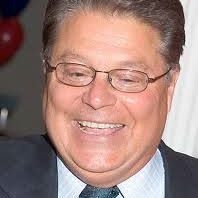
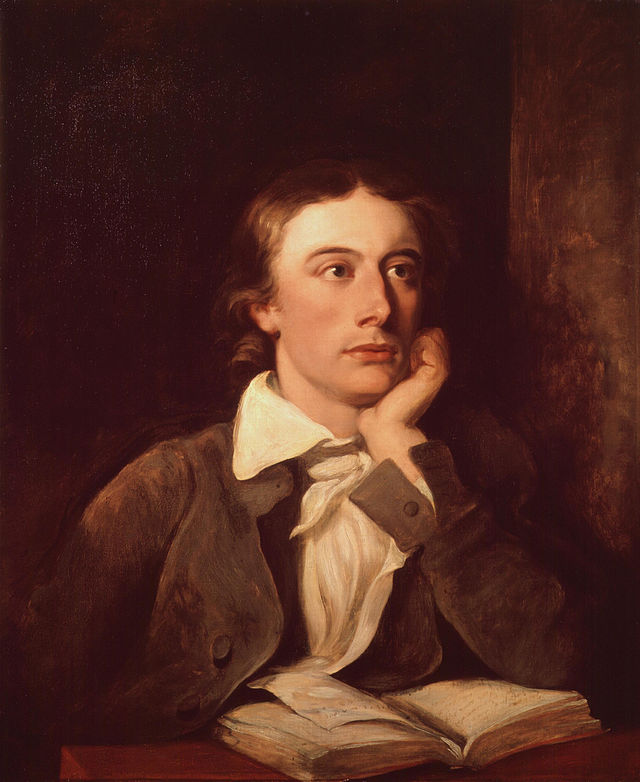
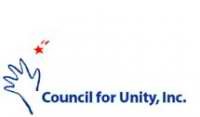
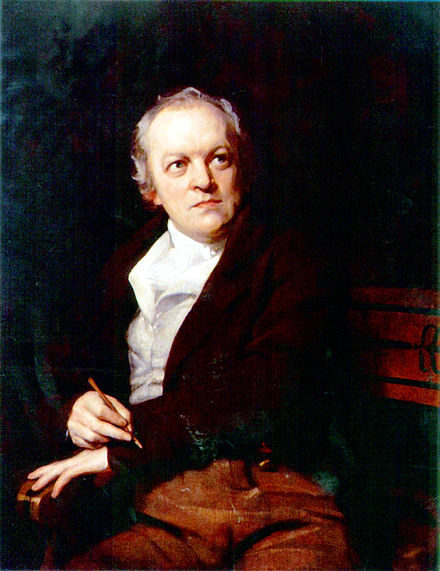 BLAKE
BLAKE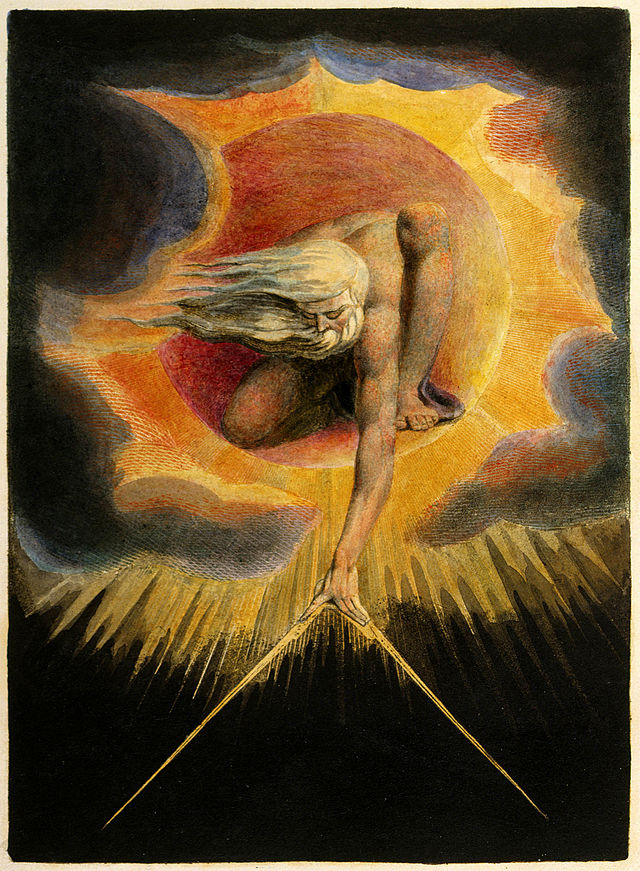
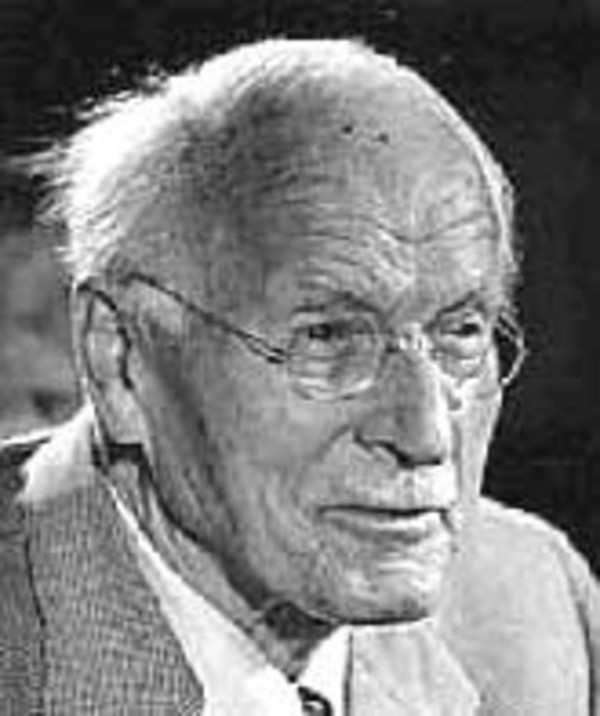
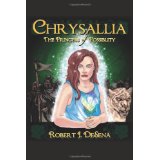
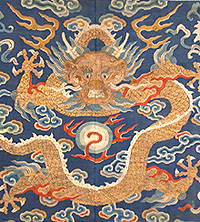
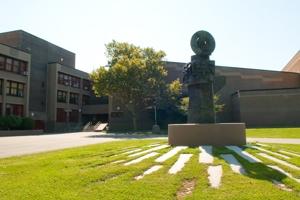
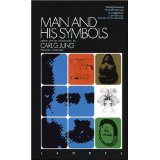
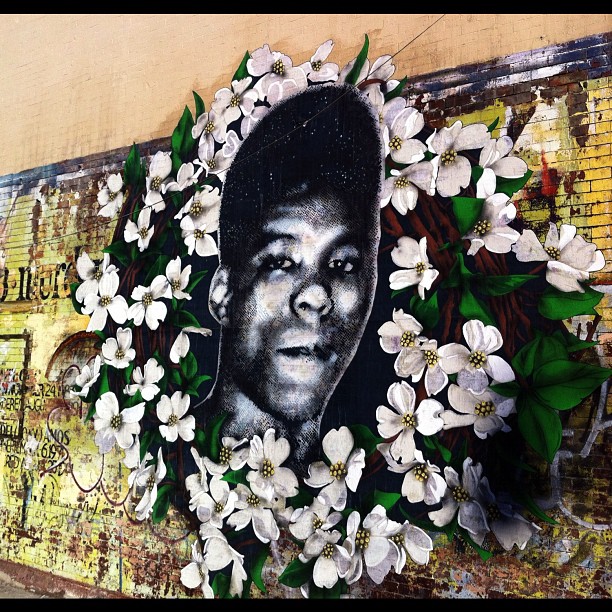
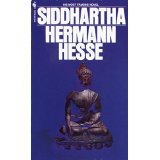
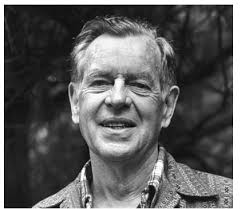
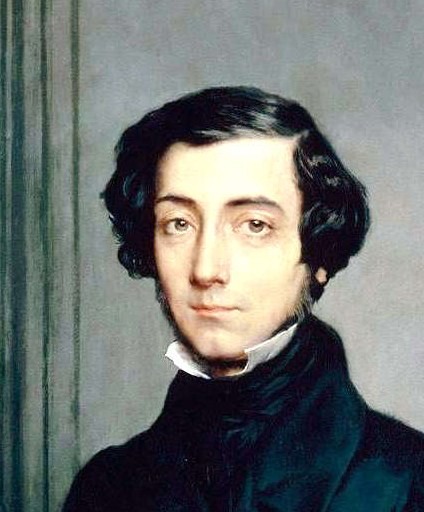

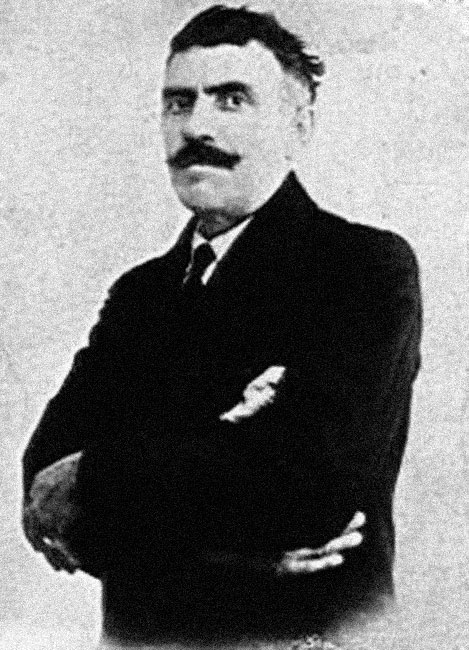
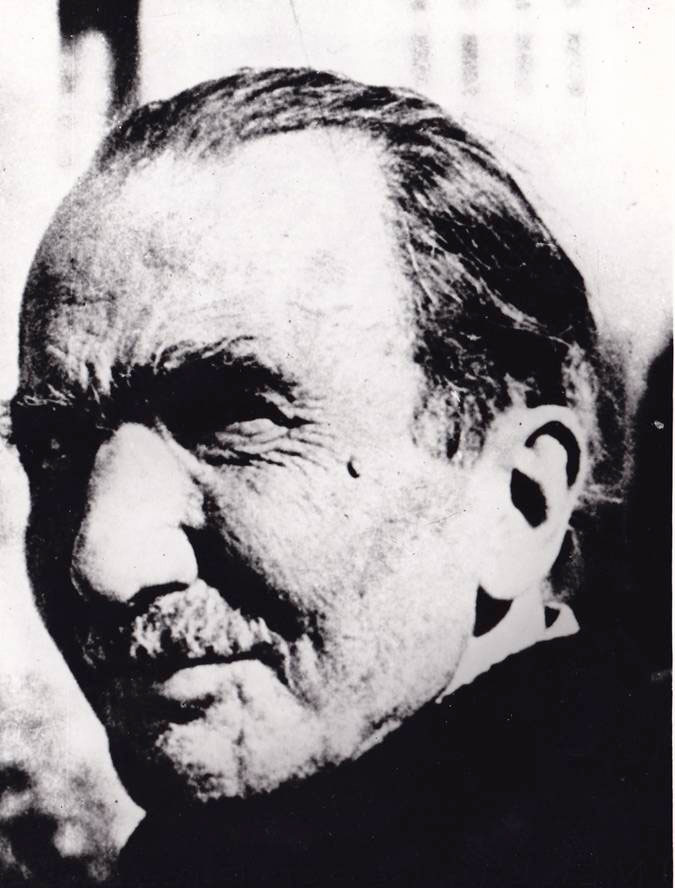 NIKOS KAZANTZAKIS
NIKOS KAZANTZAKIS